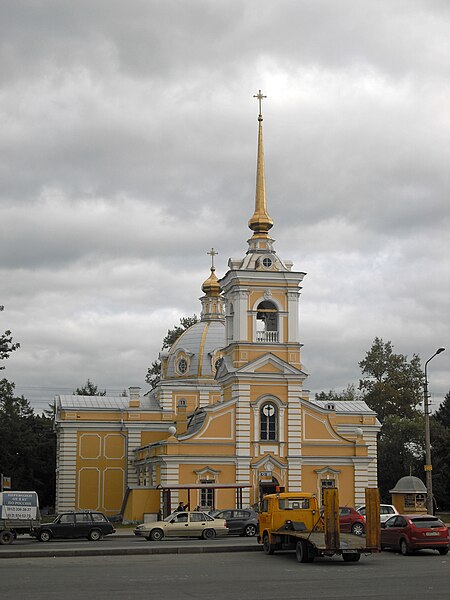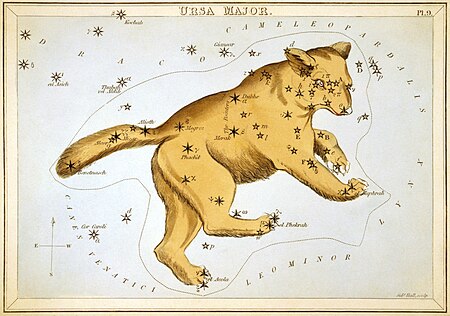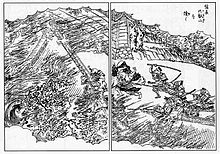Sōhei
|
Read other articles:

Mataro redirects here. For the wine grape, see Mourvèdre. For ancient lake in the Andes, see Mataro (ancient lake). For another wine grape that is also known as Mataro, see Carignan. Municipality in Catalonia, SpainMataróMunicipalityPort of Mataró FlagCoat of armsLocation of MataróLocation in Maresme countyMataróShow map of CataloniaMataróShow map of SpainCoordinates: 41°32′N 2°27′E / 41.533°N 2.450°E / 41.533; 2.450Sovereign state SpainCommunity C…

عزلة الحراتيك - عزلة - تقسيم إداري البلد اليمن المحافظة محافظة البيضاء المديرية مديرية السوادية السكان التعداد السكاني 2004 السكان 2٬410 • الذكور 1٬196 • الإناث 1٬214 • عدد الأسر 283 معلومات أخرى التوقيت توقيت اليمن (+3 غرينيتش) تعديل مصدري - تعديل عزلة ا…

Assedio di Siracusa (212 a.C.)parte della seconda guerra punicaArchimede dirige la difesa delle mura dell'antica SiracusaData214–212 a.C. LuogoSiracusa CausaImprovviso appoggio di Siracusa a Cartagine EsitoVittoria romana Modifiche territorialiConquista romana di Siracusa e dei suoi territori SchieramentiSiracusaCartagineRepubblica romana ComandantiSiracusani: IppocrateEpicideCartaginesi: ImilconeBomilcare[1]Claudio Marcello[2][3]Appio Claudio[3] Effettivi25.000…

「俄亥俄」重定向至此。关于其他用法,请见「俄亥俄 (消歧义)」。 俄亥俄州 美國联邦州State of Ohio 州旗州徽綽號:七葉果之州地图中高亮部分为俄亥俄州坐标:38°27'N-41°58'N, 80°32'W-84°49'W国家 美國加入聯邦1803年3月1日,在1953年8月7日追溯頒定(第17个加入联邦)首府哥倫布(及最大城市)政府 • 州长(英语:List of Governors of {{{Name}}}]]) • …

Не следует путать с Царским Селом. У этого термина существуют и другие значения, см. Красное Село (значения). Город[1]Красное Село Флаг Герб 59°44′01″ с. ш. 30°05′10″ в. д.HGЯO Страна Россия Субъект Федерации Санкт-Петербург Район Красносельский История и географ�…

هذه المقالة بحاجة لصندوق معلومات. فضلًا ساعد في تحسين هذه المقالة بإضافة صندوق معلومات مخصص إليها. لمعانٍ أخرى، طالع ضمير (توضيح). لوحة الرسام الفرنسي فرنسوا شيفلار (1825 – 1901) الضمير (بعد فيكتور هوجو) الضمير هو العملية المعرفية التي تثير الارتباطات الشعورية والعقلانية ب…
2020年夏季奥林匹克运动会波兰代表團波兰国旗IOC編碼POLNOC波蘭奧林匹克委員會網站olimpijski.pl(英文)(波兰文)2020年夏季奥林匹克运动会(東京)2021年7月23日至8月8日(受2019冠状病毒病疫情影响推迟,但仍保留原定名称)運動員206參賽項目24个大项旗手开幕式:帕维尔·科热尼奥夫斯基(游泳)和马娅·沃什乔夫斯卡(自行车)[1]闭幕式:卡罗利娜·纳亚(皮划艇)[2…

برزت حركة التوحيد والجهاد في غرب أفريقيا في أواخر عام 2011، ومنذ ذلك الحين زادت شهرتها وخصوصاً في شمال مالي. منذ ديسمبر 2011، وتوصف الجماعة بأنها «الجماعة الإرهابية المسلحة الأكثر إثارة للرعب في شمال مالي،» وفقا لموقع صحيفة ليبرتيه الجزائرية في 20 مايو. وذكر موقع صحيفة الوطن الج�…

The northern region of South Asia Northern Indian subcontinent redirects here. For northern region of the Indian Republic, see North India. Northern South AsiaPopulation~500,000,000 (2022)DemonymNorthern South AsianCountries Afghanistan Bangladesh Bhutan India (North India and Northeast India) Nepal PakistanLanguagesMost common first languages: BengaliHindi–UrduNepaliAssameseTime zonesUTC+5:30; UTC+5:45; UTC+06:00Internet TLD.in, .bd, .np, .btCalling c…

Large room used for meetings, social affairs or events This article is about the meeting room. For the corridor, see Hallway. For the etymology of hall, see Hall (concept). For other uses, see Hall (disambiguation). Meeting Hall redirects here. For the building in Utah, see Meeting Hall (Beaver, Utah). Prayer hall of the Great Mosque of Kairouan, in Kairouan, Tunisia In architecture, a hall is a relatively large space enclosed by a roof and walls.[1] In the Iron Age and early Middle Ages…

Shopping mall in Kolkata, IndiaMani SquareThe Mani SquareLocationKankurgachi, Kolkata, IndiaOwnerMani GroupNo. of stores and servicesMore than 250No. of floors4ParkingAvailable Mani Square is a shopping mall in Kolkata, India, with over 250 shops and more than 2,000 customers per day. It has more than 7,000,000 square feet (650,000 m2) of total area.[1][2] It is operational since 15 June 2008.[2] It is located in 164/1, Manicktala Main Road (E.M. Bypass), Kolkata, We…

Star in the constellation Ursa Major Megrez Location of Megrez (circled) Observation dataEpoch J2000 Equinox J2000 Constellation Ursa Major Right ascension 12h 15m 25.56063s[1] Declination +57° 01′ 57.4156″[1] Apparent magnitude (V) +3.312[2] Characteristics Spectral type A3 V[3] U−B color index +0.067[2] B−V color index +0.075[2] AstrometryRadial velocity (Rv)-20…

American TV executive and consultant (1940–2017) Roger AilesAiles in 2013BornRoger Eugene Ailes(1940-05-15)May 15, 1940Warren, Ohio, U.S.DiedMay 18, 2017(2017-05-18) (aged 77)Palm Beach, Florida, U.S.EducationOhio University (BA)Occupation(s)President of Fox NewsChair of Fox TelevisionStations20th TelevisionPolitical partyRepublicanSpouses Marjorie White (m. 1960; div. 1977) Norma Ferrer (m. 1981; div.…

Eiskunstlauf-Weltmeisterschaften 1999 89. Austragung Typ: ISU-Meisterschaften Datum: 20.–28. März 1999 Austragungsort: Hartwall Arena, Helsinki, Finnland Goldmedaillengewinner Herren: Russland Alexei Jagudin (2) Damen: Russland Marija Butyrskaja Paare: Russland Jelena Bereschnaja &Anton Sicharulidse (2) Eistanz: Russland Anschelika Krylowa &Oleg Owsjannikow (2) Eiskunstlauf-Weltmeisterschaften 1998 ◄ 1999 ► 2000 Die Eiskunstlauf-Weltmeisterschaften 1999 fanden vom 20. bis 28. Mär…

Artikel ini tidak memiliki referensi atau sumber tepercaya sehingga isinya tidak bisa dipastikan. Tolong bantu perbaiki artikel ini dengan menambahkan referensi yang layak. Tulisan tanpa sumber dapat dipertanyakan dan dihapus sewaktu-waktu.Cari sumber: Daftar perdana menteri Hungaria – berita · surat kabar · buku · cendekiawan · JSTOR Berikut merupakan daftar Perdana Menteri Hungaria. Perdana Menteri Hungaria Periode 1848-1849 Pangeran Lajos Batthyány: 1…

Bagian dari seriGereja Katolik menurut negara Afrika Afrika Selatan Afrika Tengah Aljazair Angola Benin Botswana Burkina Faso Burundi Chad Eritrea Eswatini Etiopia Gabon Gambia Ghana Guinea Guinea-Bissau Guinea Khatulistiwa Jibuti Kamerun Kenya Komoro Lesotho Liberia Libya Madagaskar Malawi Mali Maroko Mauritania Mauritius Mesir Mozambik Namibia Niger Nigeria Pantai Gading Republik Demokratik Kongo Republik Kongo Rwanda Sao Tome dan Principe Senegal Seychelles Sierra Leone Somalia Somaliland Sud…

2023 FIFA Women's World Cup qualification (inter-confederation play-offs)Play-Off Tournament for the FIFA Women's World Cup 2023Tournament detailsHost countryNew ZealandDates18–23 February 2023Teams10 (from 6 confederations)Venue(s)2 (in 2 host cities)Tournament statisticsMatches played7Goals scored19 (2.71 per match)Attendance6,261 (894 per match)Top scorer(s) Gabrielle Onguéné Roselord Borgella Melchie Dumornay(2 goals each)← 2019 2027 → International f…

Formula One motor race held in 2010 2010 European Grand Prix Race 9 of 19 in the 2010 Formula One World Championship← Previous raceNext race → The Valencia Street CircuitRace details[1][2]Date 27 June 2010Official name 2010 Formula 1 Telefónica Grand Prix of EuropeLocation Valencia Street Circuit, Valencia, SpainCourse Temporary street circuitCourse length 5.419 km (3.367 miles)Distance 57 laps, 308.883 km (191.931 miles)Weather Dry[3]Pole positio…

ديفيد مومفورد (بالإنجليزية: David Bryant Mumford) معلومات شخصية الميلاد 11 يونيو 1937 (العمر 87 سنة)Worth, West Sussex الجنسية أمريكي عضو في الجمعية الملكية، والأكاديمية النرويجية للعلوم والآداب، وأكاديمية لينسيان، والأكاديمية الوطنية للعلوم، والأكاديمية الأمريكية للفنون وا�…

جنديين فرنسيين في المشاة الاستعمارية ينزلون في مدغشقر عام 1895 ملصق تجنيدي للكتائب الاستعمارية لقوات فرنسا الحرة مدفع 75 مم لفرنسا الاستعمارية في الاستخدام قرب سد البحر، جاليبولي 4 يونيو 1915 الكونغو الفرنسية، حوالي 1905: مناوش استعماري يرتدي الزي الأزرق للمهندس كانت الكتائ…



